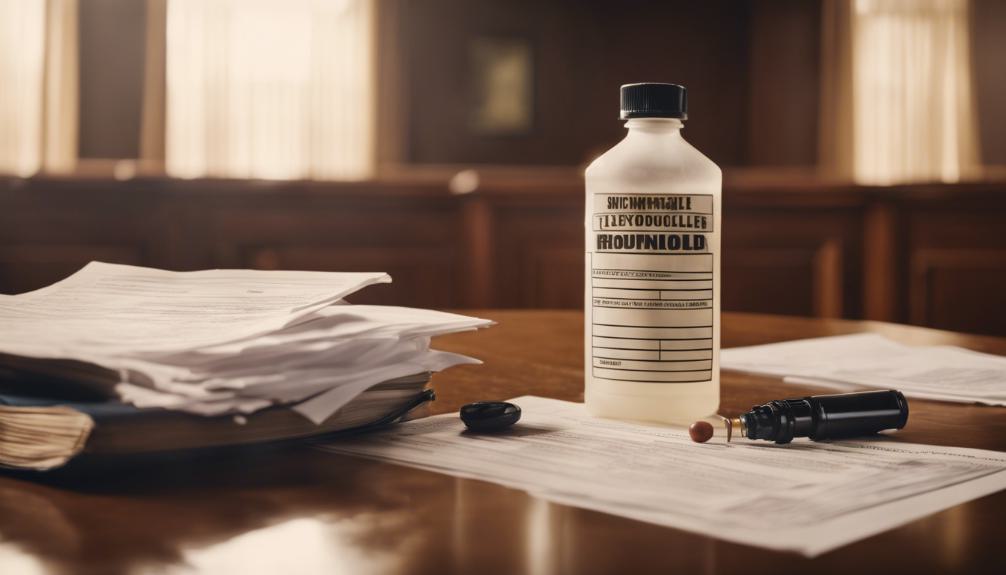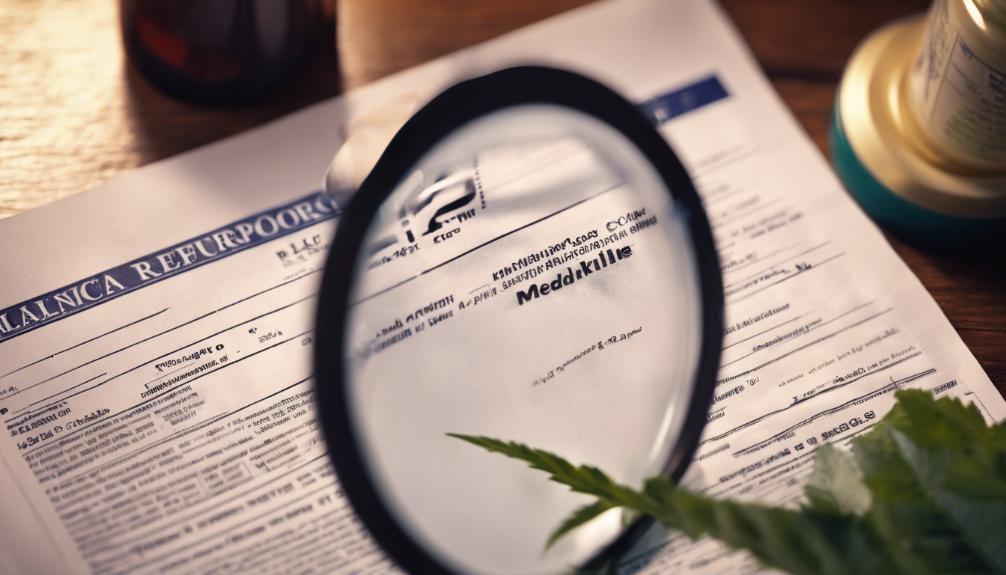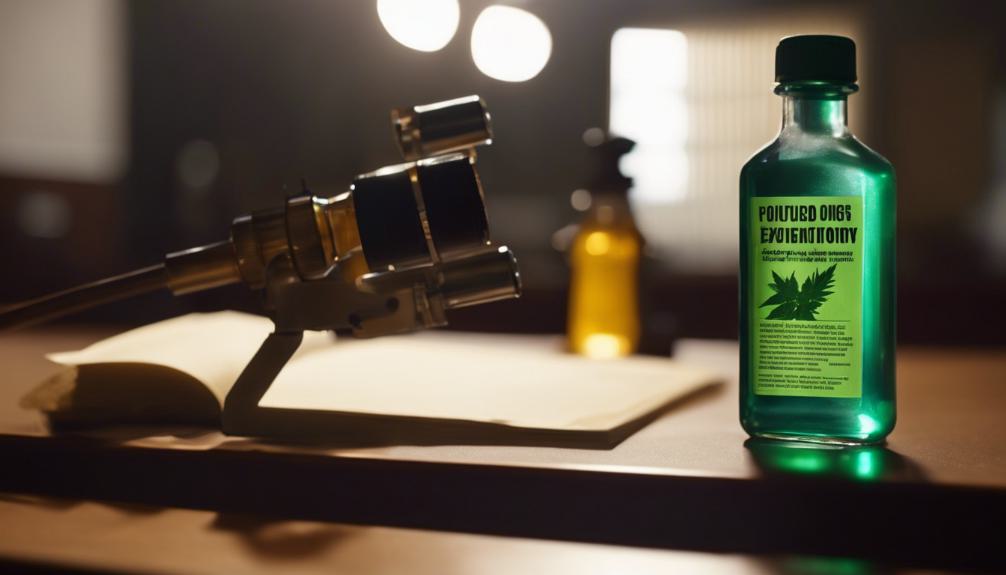Peripheral T Cell Lymphoma Lawsuit
In the vast universe of lawsuits, the case linking Roundup to Peripheral T-Cell Lymphoma (PTCL) is as monumental as it is controversial. We've all heard of Roundup, the ubiquitous weed killer, but many of us are unaware of its darker side. This lawsuit peels back the layers, revealing a potential connection between the chemical's use and the development of PTCL, a rare and aggressive form of cancer. As we explore this intricate legal battle, we'll uncover the science behind the allegations, the personal stories of those affected, and the potential implications for future litigation. This journey promises insight into not just a legal case, but a public health concern that begs for our attention.

Understanding Peripheral T-Cell Lymphoma

Peripheral T-cell lymphoma (PTCL) is a rare and aggressive form of non-Hodgkin lymphoma that affects our body's T-cells, playing a crucial role in our immune system's response to infections and diseases. This condition can be daunting because it not only disrupts the normal functioning of our immune system but also poses significant challenges in diagnosis and treatment. PTCL comprises a variety of subtypes, each with its own characteristics and behaviors, making our fight against it even more complex.
We've come to understand that the symptoms of PTCL can be as varied as its subtypes, including but not limited to, enlarged lymph nodes, fatigue, fever, and night sweats. These symptoms, unfortunately, can easily be mistaken for less severe illnesses, which means PTCL often flies under the radar until it's advanced.
Our journey toward managing PTCL involves a combination of treatments, including chemotherapy, targeted therapy, and sometimes stem cell transplantation. The choice of treatment depends on the subtype of PTCL we're dealing with, its stage, and how it's affecting our bodies. It's a tough road, but we're learning more every day, striving for better outcomes and hoping for advancements in therapy and diagnosis.
The Link Between Roundup and PTCL

We're now turning our attention to the potential connection between Roundup and PTCL, a topic of growing concern. By examining Roundup's chemical composition and known PTCL risk factors, we can better understand the grounds for recent legal actions. This segment aims to clarify the complexities surrounding this issue and the implications for those affected.
Roundup's Chemical Composition
Given its widespread use, it's crucial to understand that Roundup's chemical composition, particularly its active ingredient glyphosate, has been linked to the development of Peripheral T-Cell Lymphoma (PTCL). We've learned that glyphosate, despite its effectiveness in killing weeds, poses significant health risks. It's not just about how it eradicates unwanted plants, but the impact it has on human health that's alarming. Studies have shown a correlation between long-term glyphosate exposure and an increased risk of developing PTCL, a type of cancer affecting the lymphatic system. This connection raises serious concerns about the safety of using Roundup, especially for individuals frequently in contact with this herbicide. It's imperative we delve deeper into the implications of its chemical makeup on our health.
PTCL Risk Factors
Understanding the link between Roundup and PTCL is crucial, as research suggests that individuals with prolonged exposure to glyphosate may face a higher risk of developing this aggressive cancer. We've learned that the components within Roundup, particularly glyphosate, are under scrutiny for their potential to disrupt cellular processes, leading to the development of Peripheral T-Cell Lymphoma (PTCL), a type of non-Hodgkin lymphoma. It's becoming clearer that those who've spent significant time in environments where Roundup is frequently used, such as agricultural workers, landscapers, and gardeners, may be at an elevated risk. Our focus has shifted towards understanding these correlations better, emphasizing the necessity for individuals in these high-exposure groups to be aware of the symptoms and seek timely medical advice for any concerning signs.
Legal Actions Update
Having examined the potential risks associated with Roundup and PTCL, let's now explore the legal responses to these concerns. We've witnessed a surge in lawsuits alleging a connection between Roundup use and the development of Peripheral T-Cell Lymphoma. Plaintiffs argue that prolonged exposure to Roundup's active ingredient, glyphosate, significantly increased their risk of developing this aggressive cancer. In response, affected individuals are seeking justice and compensation through the legal system. These lawsuits aim to hold the manufacturer accountable for failing to warn users about the potential health risks. As these legal battles unfold, we're closely monitoring the outcomes and implications for both the plaintiffs and the broader community concerned about the safety of Roundup.
History of Roundup Usage

We've explored how Roundup may be linked to PTCL, but it's crucial we also understand its historical context. Let's examine the development timeline of Roundup and how it became widely adopted globally. This background is essential for grasping the full scope of the lawsuit and its implications.
Roundup Development Timeline
The development timeline of Roundup, a widely used herbicide, reveals its introduction to the market by Monsanto in the 1970s and its subsequent global spread. Since its inception, we've seen it evolve from a groundbreaking agricultural tool to a subject of environmental and health debates. Initially, its active ingredient, glyphosate, was hailed for its effectiveness in killing a wide variety of weeds without harming crops genetically modified to resist it. Throughout the '80s and '90s, we witnessed a rapid expansion in its use, not just in agriculture, but also in urban areas for weed control. Its ease of use and perceived efficiency made it a go-to solution for farmers and city councils alike, setting the stage for its widespread adoption before concerns about its safety began to emerge.
Global Adoption Patterns
Following the rapid expansion of Roundup in the '80s and '90s, its global adoption patterns reveal a complex history of usage across various countries. We've seen it become almost ubiquitous in agricultural sectors worldwide, adopted eagerly by farmers for its effectiveness against a wide range of weeds. However, this widespread use has not been without controversy. Different regions have reacted to the emerging health concerns associated with Roundup in varied ways. While some countries have imposed strict regulations or outright bans, others have maintained a more lenient stance, prioritizing agricultural productivity. We're witnessing a global dialogue, balancing economic interests with public health concerns. This evolving landscape reflects the diverse approaches to managing the risks and benefits of Roundup usage around the world.
Chemical Composition of Roundup

Understanding Roundup's chemical composition is crucial, as it's at the heart of numerous health concerns. The primary active ingredient in Roundup is glyphosate, a broad-spectrum systemic herbicide that works by inhibiting a specific enzyme pathway required for plant growth. This mechanism of action is what makes glyphosate so effective as a weed killer but also raises questions about its safety and environmental impact.
Aside from glyphosate, Roundup formulations may contain other ingredients known as adjuvants, which are added to enhance the herbicide's effectiveness. These can include surfactants, which help the herbicide stick to and penetrate the leaves of plants, making the glyphosate more effective. However, the exact composition of these adjuvants is often proprietary, meaning we're not always fully informed about everything that's in Roundup products.
We've also seen that the concentration of glyphosate can vary significantly between different Roundup products, affecting both their potency and potential risks. It's this complex blend of glyphosate and other chemicals that has led to widespread debate about Roundup's safety, both for human health and the environment. Understanding these components is key to comprehending why there are so many concerns surrounding the product.
Symptoms of PTCL

Given the complex chemical makeup of Roundup, it's crucial we explore how exposure could manifest, particularly through symptoms associated with Peripheral T-Cell Lymphoma (PTCL).
We've come to understand that PTCL, a type of non-Hodgkin lymphoma, presents a range of symptoms we can't ignore. Initially, folks might notice swelling in lymph nodes, usually not accompanied by pain, a sign easily dismissed as benign. However, as we've delved deeper, we've learned that weight loss, fever, and night sweats, often described as B symptoms, are more telling of the condition. Fatigue is another common complaint, alongside skin rashes that aren't explained by other conditions.
We're especially concerned about the more severe indicators, such as difficulty breathing or chest pain, which suggest the disease may be advancing. Frequent infections also point to a compromised immune system, a direct consequence of PTCL affecting lymphocytes.
It's clear that recognizing these symptoms early on is key to addressing the impact of Roundup exposure. We're committed to spreading awareness, ensuring individuals understand when it's time to seek medical advice.
Diagnosing Peripheral T-Cell Lymphoma

Identifying PTCL early is crucial, and it starts with recognizing the need for specific diagnostic tests. We've learned that to accurately diagnose Peripheral T-Cell Lymphoma (PTCL), doctors often begin with a complete blood count (CBC) and a physical examination to check for swollen lymph nodes. If PTCL is suspected, a biopsy of the lymph node is typically the next step. This involves removing a small tissue sample from the lymph node and examining it under a microscope for cancer cells.
We understand that imaging tests, like CT scans or PET scans, may also be used to determine the extent of the disease within the body. These scans help in mapping out the affected areas and planning the treatment accordingly.
Blood tests to check for specific proteins, enzymes, and other markers that might indicate PTCL are also part of the diagnostic process. These tests can provide valuable information about the subtype of PTCL, which is critical for tailoring the treatment to the individual's specific type of lymphoma.
It's clear that diagnosing PTCL involves a combination of physical examinations, imaging tests, and laboratory tests. Each step is vital in confirming the presence of PTCL and deciding the best course of action for treatment.
Legal Precedents in Product Liability

Examining key legal precedents in product liability, we'll explore how court decisions have shaped the landscape for lawsuits like the Roundup Peripheral T-Cell Lymphoma case.
Historically, we've seen cases where the courts have set significant standards on how liability is determined. For instance, in cases like the landmark decision in Greenman v. Yuba Power Products, the court established the doctrine of strict liability. This means a manufacturer can be held liable for injuries caused by their product, even if they weren't negligent. This principle has become a cornerstone for many product liability claims, emphasizing the importance of safety and accountability.
Another pivotal moment came with the Daubert v. Merrell Dow Pharmaceuticals case, which redefined the admissibility of expert testimony in trials. It's crucial for cases like ours, where scientific evidence plays a central role in establishing causation between the product and the illness.
These precedents highlight the evolving nature of product liability law, laying the groundwork for holding companies accountable. As we navigate through our lawsuit, these decisions remind us of the legal mechanisms in place to protect consumers and ensure justice is served.
Steps to File a PTCL Lawsuit

Having explored the legal precedents in product liability, let's now discuss how to initiate a PTCL lawsuit.
First, we need to identify the appropriate legal representation. This step is crucial, as it sets the foundation for our case. We'll look for attorneys who specialize in product liability cases, particularly those with experience in PTCL lawsuits. It's essential that we're comfortable with our choice, as we'll work closely with them throughout this process.
Next, we'll officially file our lawsuit. Our attorney will help us draft and file the complaint, which outlines our allegations and the damages we seek. This document is filed in court, officially starting our lawsuit.
We must also be prepared for the response from the defendant, which typically involves a denial of our claims. Our legal team will navigate these responses, working diligently to advocate on our behalf.
Lastly, we prepare for the possibility of pre-trial settlements or going to trial. While some cases settle out of court, we're ready to go to trial if necessary, confident in the strength of our evidence and the righteousness of our cause. Throughout this journey, we stay informed and actively participate in our legal strategy, ensuring our voices are heard.
Gathering Evidence for Your Case

Once we've chosen our legal team, it's crucial we start gathering all relevant evidence to strengthen our case. This means we'll need to compile a comprehensive list of documents and records that can directly link our exposure to Roundup with the development of Peripheral T-cell Lymphoma (PTCL).
First and foremost, we'll gather any medical records and test results that confirm our PTCL diagnosis. These documents are pivotal as they establish the presence of the disease. We'll also need to collect records of our treatment history, including any medications, chemotherapy, or radiation therapy we've undergone. This information not only demonstrates the seriousness of our condition but also helps in quantifying the medical expenses incurred due to the illness.
Next, we're on the hunt for evidence of Roundup exposure. This could include receipts or records of purchase, as well as any documentation of usage, such as logs or diaries. If we've worked in environments where Roundup usage was prevalent, employment records or testimonies from colleagues could further substantiate our exposure.
Lastly, we'll document any communications with Monsanto or Bayer, especially if we've previously raised concerns about Roundup's safety. Every piece of evidence adds weight to our claim, making it harder for the defense to refute our allegations.
Potential Compensation and Damages

As we move forward, let's explore the potential compensation and damages associated with Roundup lawsuits, specifically for those suffering from Peripheral T-Cell Lymphoma. We'll look into the various types of compensation available, how damage awards are calculated, and what to expect in terms of the legal process timeline. It's crucial for victims to understand these aspects to navigate their cases effectively.
Types of Compensation
In the context of the Roundup lawsuit, victims of peripheral T-cell lymphoma may be entitled to various forms of compensation and damages. We're talking about compensation that covers medical bills, both past and future, as these treatments can be extensive and costly. There's also the matter of lost wages. Many victims find themselves unable to work, either temporarily or permanently, and this financial support is crucial.
Moreover, we can't overlook compensation for pain and suffering. This acknowledges the emotional and physical distress caused by the illness. In some cases, if the company's actions were particularly egregious, punitive damages might be awarded. These aren't about compensating the victim but rather punishing the wrongdoer and deterring similar conduct in the future. It's about justice, as much as it is about support and recovery.
Calculating Damage Awards
Calculating potential compensation and damages in a Roundup lawsuit involves a complex process, considering factors like medical expenses, lost wages, and the severity of emotional distress. We're looking at every angle to ensure that victims get the most accurate representation of their losses. It's not just about the numbers; it's about understanding the profound impact on a person's life. We delve into the specifics, assessing how the illness has affected the victim's ability to work, their quality of life, and their future prospects. We're also considering non-economic damages, such as pain and suffering, which are harder to quantify but equally important. Our goal is to secure a settlement that reflects the true extent of the harm caused, ensuring that justice is served for our clients.
Legal Process Timeline
Navigating through the legal process to secure potential compensation and damages can take a considerable amount of time, depending on various factors. It's crucial to understand that each case is unique, and the timeline can vary widely. Generally, we're looking at several stages, including filing the lawsuit, discovery, settlement negotiations, and possibly a trial. The complexity of your case, the court's schedule, and the willingness of both parties to reach a settlement play significant roles in determining the timeline. We strive to expedite the process while ensuring we don't compromise on achieving the best possible outcome for you. It's a delicate balance, but we're committed to guiding you through every step, keeping you informed and supported.
The Role of Expert Witnesses

Expert witnesses play a crucial role in elucidating the complex scientific principles underlying the Roundup lawsuit. Their testimony provides clarity on the intricate connection between Roundup exposure and the development of peripheral T-cell lymphoma. We rely on these experts to break down the scientific jargon into terms that are understandable for the jury and the court. Their insights are indispensable, as they bridge the gap between sophisticated scientific findings and the legal arguments we present.
These witnesses aren't just selected randomly; we carefully choose professionals with extensive experience and respected credentials in fields like toxicology, oncology, and epidemiology. Their analyses and opinions are based on rigorous examination of the data and studies related to glyphosate, the active ingredient in Roundup. By meticulously evaluating the existing research, they can testify about the likelihood that Roundup exposure contributed to the development of health issues.
Their contribution extends beyond just testifying. They help us during the discovery phase, guiding us through the vast scientific literature and assisting in the formulation of questions for depositions. Their expertise ensures that every argument we make is solidly backed by credible scientific evidence, bolstering the case against the defendants.
Navigating Settlement Negotiations

We're entering a critical phase of the lawsuit as we start settlement negotiations with the defendants. This stage is where we leverage the evidence, including the compelling testimonies of expert witnesses, to secure the best possible outcome for our clients. It's a delicate balance, aiming for a settlement that reflects the severity of the harm caused by the defendants' products while also considering the emotional and financial toll of prolonged litigation on our clients.
Negotiating settlements isn't just about numbers; it's about justice and recognition of the suffering our clients have endured. We're committed to being their voice, ensuring their stories are heard and acknowledged in these discussions. It's a process that requires patience, as negotiations can be lengthy and complex, but we're steadfast in our resolve to fight for what's fair.
Throughout this process, we're transparent with our clients, keeping them informed and involved. Their input is invaluable, and their approval is paramount before any agreement is finalized. We're not just their legal representatives; we're their partners in this journey towards justice, and we'll tirelessly advocate on their behalf to reach the most favorable settlement possible.
Future Outlook for PTCL Litigations

Looking ahead, it's clear that PTCL litigations will likely become more prevalent as awareness and understanding of the condition's link to certain chemicals increases. We're seeing a growing body of evidence suggesting a strong correlation between exposure to specific herbicides, like Roundup, and the development of Peripheral T-Cell Lymphoma (PTCL). As this evidence mounts, it's reasonable to expect a surge in the number of individuals coming forward with related claims.
We're also anticipating advancements in medical research that could further solidify the connection between chemical exposure and PTCL. This, in turn, would bolster the legal standing of future cases, making it harder for defendants to dismiss or undervalue these claims. Moreover, public sentiment is shifting towards greater environmental and health consciousness, which could influence jury perceptions and outcomes in favor of plaintiffs.
In the legal arena, we're preparing for more robust litigation strategies and the possibility of larger settlements or awards for victims. As attorneys specializing in this area, we're committed to staying at the forefront of legal and medical research to effectively advocate for our clients. The journey ahead may be complex, but we're optimistic about achieving justice for those affected by PTCL.
Frequently Asked Questions
What Alternative Treatments Are Available for Peripheral T-Cell Lymphoma (Ptcl) if Traditional Chemotherapy Is Ineffective?**
We're exploring alternative treatments for PTCL after traditional chemotherapy's failed. Options include targeted therapies, immunotherapies, and stem cell transplants. It's crucial to consult healthcare providers to tailor treatment to individual needs and conditions.
How Has Public Opinion About the Safety of Roundup Changed Over the Years, Especially in Communities Heavily Reliant on Agriculture?**
We've noticed that over the years, public opinion on Roundup's safety, especially in agricultural areas, has shifted significantly. Many now question its safety due to rising health concerns and legal actions related to its use.
Are There Any Notable Differences in PTCL Incidence Rates Across Different Demographics, Such as Age Groups, Genders, or Ethnicities?**
We've noticed that PTCL incidence rates do vary among different demographics, including age groups, genders, and ethnicities. It's intriguing to see how these factors play a role in the prevalence of this condition.
What Advancements in Medical Technology or Diagnostics Are Being Developed to Improve Early Detection Rates of Ptcl?**
We're excited about the advancements in medical tech aimed at improving PTCL early detection. Innovations in blood tests and imaging techniques promise to catch it earlier, enhancing treatment outcomes and patients' survival rates.
How Do PTCL Lawsuits Impact the Mental Health and Emotional Well-Being of Plaintiffs Involved in Long-Term Litigation Against Large Corporations?**
We've noticed that PTCL lawsuits can significantly strain plaintiffs' mental health, as battling large corporations in protracted legal fights is emotionally taxing, often exacerbating stress and anxiety during an already difficult health journey.

This post has been generated by AI and was not reviewed by editors. This is Not legal advice. Please consult with an attorney.




